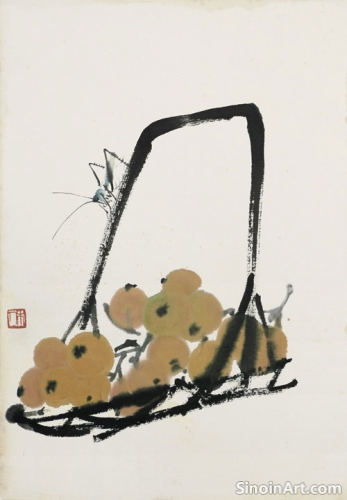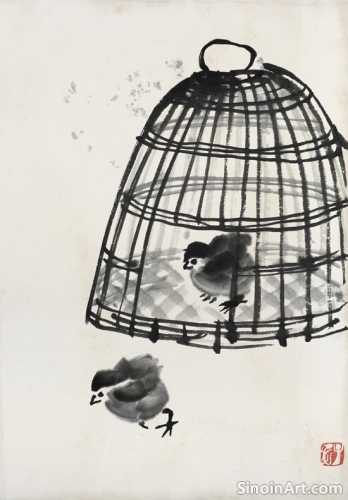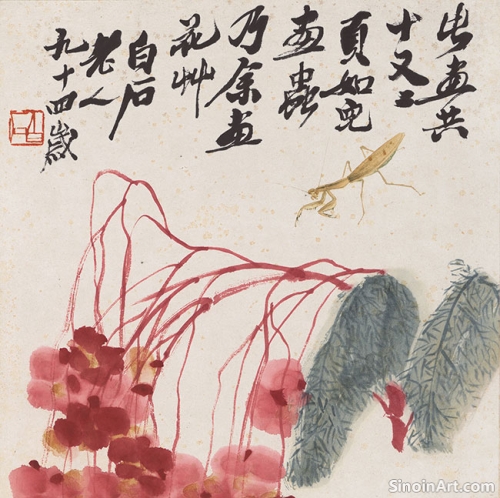Common Subjects in Xieyi Painting
|
Xieyi painting draws inspiration from the natural world and the everyday life of the artist. Certain subjects are particularly common, each with its own symbolism and significance. These subjects are not simply depicted; they are imbued with the artist's personal interpretation and understanding of their inner essence. Exploring these subjects reveals not only the art of painting but also the philosophical depth of the tradition.  Bamboo is a recurring theme in Xieyi painting, symbolizing resilience, integrity, and moral uprightness. Its slender stalks and rustling leaves are often depicted with swift, calligraphic brushstrokes, capturing the plant's flexibility and vitality. Bamboo's ability to bend without breaking has made it an enduring symbol of strength. The simple elegance of the bamboo offers artists endless opportunities for variations in technique.  Plum blossoms are another popular subject, celebrated for their beauty and endurance, especially as they bloom in late winter. They represent courage, perseverance, and the fleeting nature of beauty. The delicate petals and gnarled branches offer a visual contrast that is both aesthetically pleasing and symbolically meaningful. Their ephemeral nature connects to broader philosophical concepts of impermanence.  Landscapes, or "Shan Shui" (mountain-water) paintings, are a cornerstone of Chinese art, embodying the harmonious relationship between humanity and nature. In Xieyi landscape painting, the artist emphasizes the grandeur and energy of the natural world, using washes of ink to create a sense of atmosphere and depth. Mountains, rivers, and trees become conduits for the artist's inner journey. Birds and flowers are also frequent subjects, capturing the beauty and vitality of nature. From the soaring flight of eagles to the delicate beauty of orchids, these subjects are depicted with a sensitivity to their individual characteristics and a sense of wonder and appreciation. The careful observation of nature is paramount to translating this into the expressive language of Xieyi. Animals, often those encountered in daily life or folklore, also find their way into Xieyi painting. From playful kittens to powerful tigers, these subjects are depicted with an understanding of their essential nature and behavior. These depictions are rarely realistic; they are evocative. Often they act as metaphors for personal states or deeper symbolic meanings. |
Tag : Bamboo painting, plum blossom art, Shan Shui landscape, Chinese bird paintings, traditional subjects
Related information
- The Connection Between Xieyi and Chinese Gardens
- Xieyi Painting and the Use of "Leaving the Brush"
- Xieyi Painting and the Depiction of Mountains
- Xieyi vs. Gongbi: Two Paths of Chinese Painting
- The Concept of "Yi" in Xieyi Aesthetics
Xieyi painting and traditional Chinese gardens share a focus on naturalness, harmony, strategic use of negative space, and asymmetry, both creating microcosms of nature that foster contemplation, reflection, and a deeper connection to nature and the human spirit, displaying shared design principles and underlying goals.
"Leaving the Brush" (cángfēng) in Xieyi involves concealing the brush tip when beginning and ending a stroke, creating lines with a subtle beginning and end, conveying inner strength, control, and intentionality, contrasting with the technique of "revealing the brush," and demonstrating the mastery of brush control.
Mountains in Xieyi are depicted through washes and suggestive strokes to capture their grandeur, scale, texture, and symbolic connection to stability, timelessness, and the human-nature relationship, reflecting the artist's emotional response to their beauty, power, and mystery.
This article contrasts Xieyi painting with Gongbi painting, highlighting the differences in their techniques, brushwork, use of color, and overall artistic philosophies within the Chinese painting traditions.
"Yi" (untrammeled) is a highly valued aesthetic in Xieyi painting, referring to effortless freedom, spontaneity, a lack of artifice, and a sense of naturalness, achieved by letting go of rigid rules, allowing intuition to guide the brush, and creating artworks that are both expressive and simple.